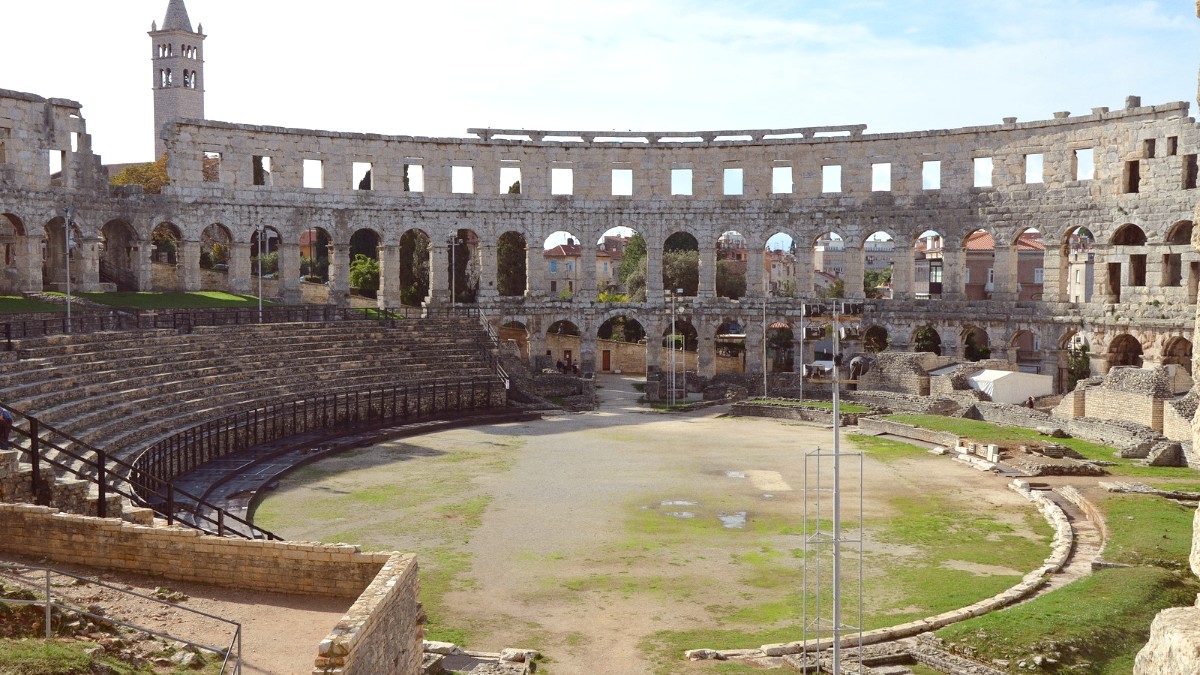
Istria, Croatia
Pula is a lively port city, a hub for the surrounding region, and a gateway to Istria's diverse offerings. This guide offers a thorough overview of Pula, from its unique geographical placement to its layered historical identity and its contemporary character. A clear understanding of what makes this city a compelling travel choice awaits, preparing you for a journey filled with discovery and enjoyment.
The destination presents a compelling experience for those who appreciate both history and natural beauty. It offers a chance to witness profound architectural heritage preserved over two thousand years, still serving as a stage for contemporary life.
The city's atmosphere, a mix of Italian zest and Slavic warmth, creates a welcoming environment. Locals engage in their daily routines, adding an authentic layer to your exploration. Pula invites participation, tasting, listening, and feeling its enduring spirit.
Pula sits at the southernmost tip of the Istrian Peninsula, a heart-shaped landmass extending into the northern Adriatic Sea. This strategic location shaped its history and current character. The city's coordinates, approximately 44°52′N 13°51′E, place it within easy reach of neighboring Italy and Slovenia, contributing to its rich cultural fusion. Seven hills undulate around the city: Kaštel, Zarošt, Monte Ghiro, Monte Serpente, Monte Magno, Monte Paradiso, and Monte Rizzi. These elevations offer picturesque views and influenced the city's ancient defenses and urban development.
The city extends into a deep, naturally protected bay, forming an excellent harbor. This natural port stood as a cornerstone of Pula's prosperity since ancient times, supporting its roles in shipbuilding, fishing, and trade. The coastline around Pula features coves and small islands, creating an inviting natural environment for swimming, sunbathing, and exploring. The sea here displays remarkable clarity, with varying shades of turquoise and blue, inviting diving or boat rides. Mediterranean vegetation, including dense pine forests, reaches down to the coast, offering pleasant shade and fresh, aromatic air.
Warm, dry summers and mild, wet winters. Proximity to the sea moderates temperatures, preventing extremes.
A local wind, the "bura", brings surprisingly cold, strong gusts, specifically in winter, capable of affecting travel plans.
Approximately 270 kilometers from Zagreb and 100 kilometers from Trieste, Italy, making it a viable day trip or alternative arrival point.
Well-developed roads link Pula to other Istrian towns like Rovinj and Poreč, supporting easy exploration of the peninsula's diverse offerings.
Pula's geography an integral part of its identity, shaping everything from its ancient architecture to its modern industries and recreational opportunities.
A panoramic view of Pula's coastline and the city, with the Arena visible.
Pula's history spans more than three millennia, a deep and complex narrative etched into its very foundations. The city's story began with the Illyrian Histri tribe, who established a settlement here, recognizing the strategic value of its naturally protected harbor. This early foundation set the stage for its dramatic evolution.
The most profound period in Pula's history began with the arrival of the Romans. Flourishing under Roman rule, the settlement transformed into Colonia Pietas Iulia Pola. The amphitheater, constructed between 27 BC and 68 AD, is one of the best-preserved Roman arenas globally, a powerful symbol of the city's past might. Beyond the Arena, the Romans endowed Pula with a sophisticated urban plan, including a forum, temples, city gates (like the Arch of the Sergii and the Twin Gates), and a complex water supply system. Pula became a thriving Roman colony, a testament to Roman engineering and administrative prowess.
Image: A composite image showing the Arch of the Sergii, the Temple of Augustus, and a Venetian-era building in Pula.
This snapshot offers a concise overview of the city's current profile.
Pula's population stands at approximately 52,220 residents, according to the 2021 census. This number reflects a medium-sized European city, large enough to support diverse services and a lively urban environment, yet small enough for a welcoming, accessible feel. A community balances its historical heritage with modern living, where local traditions coexist with a forward-looking approach, especially in the growing tourism sector.
Croatian is the official language. Italian is also widely spoken. English is commonly understood in tourist areas. Basic Croatian phrases like "Dobar dan" (Good day) or "Hvala" (Thank you) welcome interaction.
Croatia adopted the Euro (€) on January 1, 2023. Credit and debit cards are widely accepted, but cash for smaller businesses or markets is a good idea. ATMs are widely available.
Pula observes Central European Time (CET), which is UTC+1. During daylight saving time, it switches to Central European Summer Time (CEST), UTC+2. Adjust devices upon arrival.
Pula's economy relies on a mix of industries, with tourism holding a prominent position. The city's stunning Roman heritage, beautiful coastline, and strategic location attract visitors, supporting a robust hospitality sector. Shipbuilding holds historical significance, with the Uljanik shipyard defining the city's port for over a century.